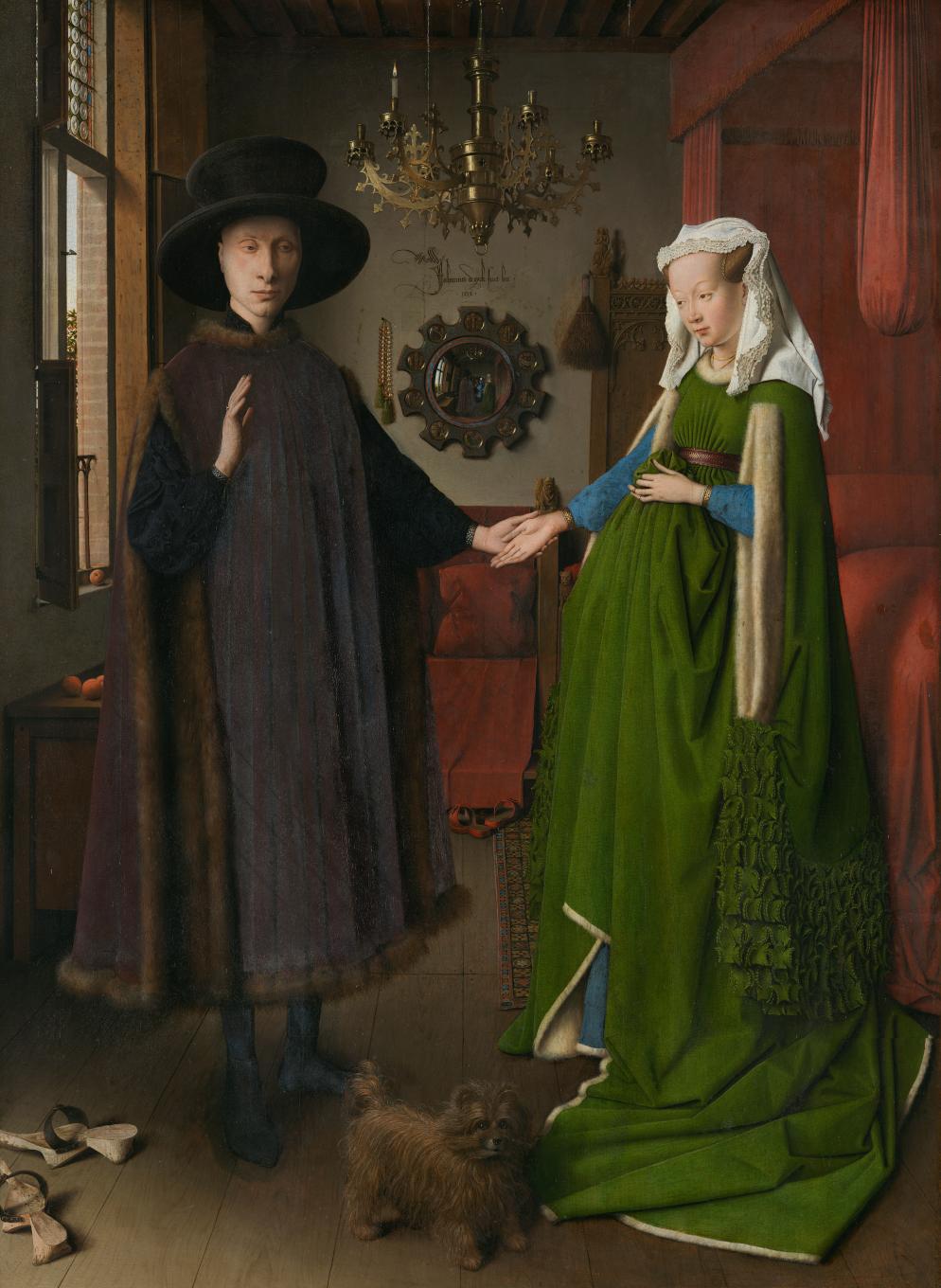Jan van Eyck
In the fifteenth century the Belgian city of Bruges was one of the principal artistic centres of Europe. It was a prosperous seaport until its river silted up around 1500, and its wealthy merchants commissioned paintings to celebrate themselves, their families and their success. Artists reached new, triumphant heights hitherto unequalled in Europe, and Jan van Eyck was one of the most remarkable of them all.
For a long time he was credited with the actual invention of oil painting, and although this has been disproved, it is certain that he perfected a medium of pigment, oil and varnish which has allowed his rich colour to survive almost unchanged.
 The Arnolfini Marriage was probably the first double full-length contemporary
portrait in the North. It was painted for a merchant of Bruges, and it is
generally thought that the picture celebrates the marriage of Giovanni
Arnolfini, a silk merchant from Tuscany trading in the Netherlands, to Giovanna
Cenami. The artist was witness to the ceremony, and as proof the words
‘Johannes de Eyck fuit hie. 1434.’ (Jan van Eyck was here) are inscribed on the
wall above the mirror.
The Arnolfini Marriage was probably the first double full-length contemporary
portrait in the North. It was painted for a merchant of Bruges, and it is
generally thought that the picture celebrates the marriage of Giovanni
Arnolfini, a silk merchant from Tuscany trading in the Netherlands, to Giovanna
Cenami. The artist was witness to the ceremony, and as proof the words
‘Johannes de Eyck fuit hie. 1434.’ (Jan van Eyck was here) are inscribed on the
wall above the mirror.
The room is lit by clear, cool daylight, and each object stands out with crystal clarity on the highly finished surface of the painting, showing van Eyck’s remarkable feeling for texture and the effects of light. It is no chance collection of items: everything has a direct relevance to marriage, or to the circumstances of this particular marriage. The house itself is substantially built of brick, and the rich clothes of the couple, the hangings of the bed, the Turkish carpet, the mirror on the wall, even the oranges which were hard to obtain in the North, are all signs of their prosperity. The apple on the window ledge may be used to symbolize the fruit of the Tree of Knowledge ; a single candle, representing the Spirit of God, burns in the ornate brass chandelier; the frame of the mirror contains ten scenes from the Passion of Christ, and next to it hangs a rosary made of crystal or amber, reflecting the light. The blue of the woman’s sleeves and underskirt may be used to denote purity (and it is more likely that her voluminous dress was the fashion than that its folds conceal her pregnancy, as has been suggested). On the wooden chair beyond the canopied bed is the tiny carved figure of a saint, possibly St Margaret, the patron saint of childbirth; and even the small dog at the woman’s feet is recognized as a symbol of fidelity.
An informal atmosphere is created by the presence of the dog and the man’s clogs lying askew on the floor, which adds to the astonishing realism of the painting. Van Eyck has defined the relationship of marriage in both worldly and spiritual terms in this portrait, and reveals his extraordinarily accomplished technique in its accuracy, clarity of colour and perception of the realities of life.





